In the middle of Munich, on an island in the river Isar, there's a celebrated museum which was probably my favorite museum to visit on that side of the world. It has a humble name: Deutsches Museum, which simply means "German Museum." It is, in fact, the world's largest science and technology museum. If you ever visit Munich, you must visit this place, like I did on Friday, May 20, 2022.
The museum is huge; it takes up eight stories of varying sizes. If you're American you should remember how floors in a building are numbered on this side of the world. What is known as the "first floor" in the US is the ground floor in Europe, the US second floor is the EU first floor, and so on. Thus, in the Deutsches Museum you have "Level 0" at ground level, above that Level 1, and so on all the way up to Level 6. There's also a basement, labeled "Level -1."
At the time I visited, the price of admission was 14€, which is pretty reasonable. Back then that was worth $14.55, now it's probably less.
I started my walk through the museum on Level 0, near the entrance, in the Metals and Foundry exhibits. All through this area they have examples of many different metals on display, along with dioramas depicting foundries in which these metals were smelted from raw ores.
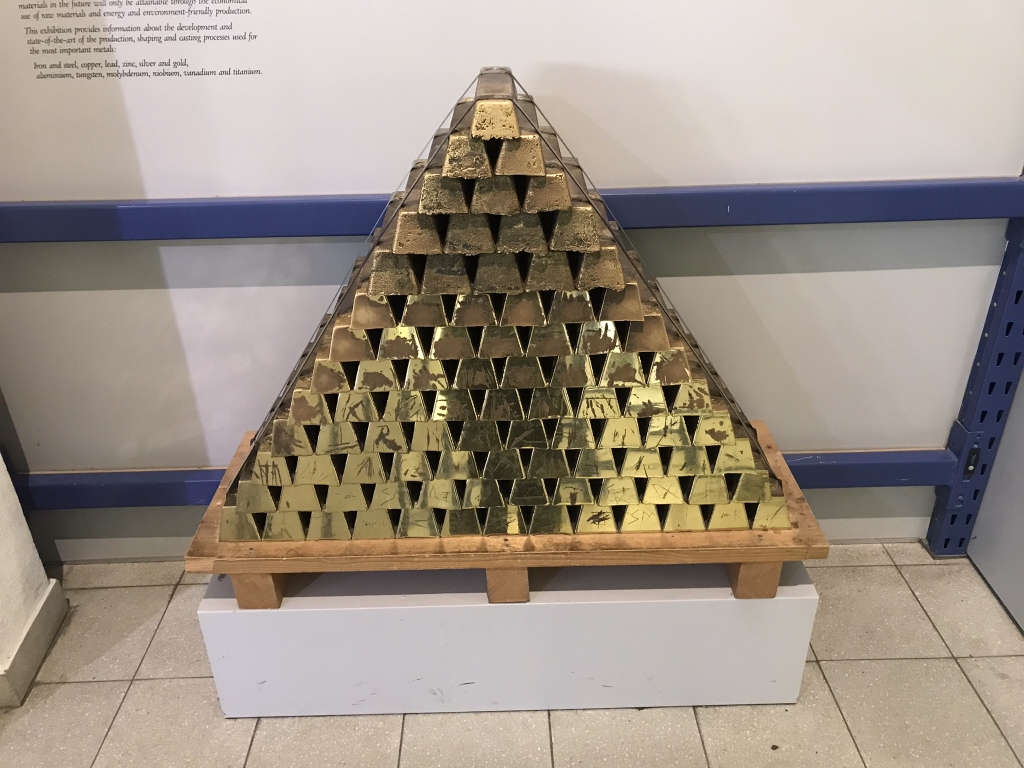
Here's a stack of gold bars.
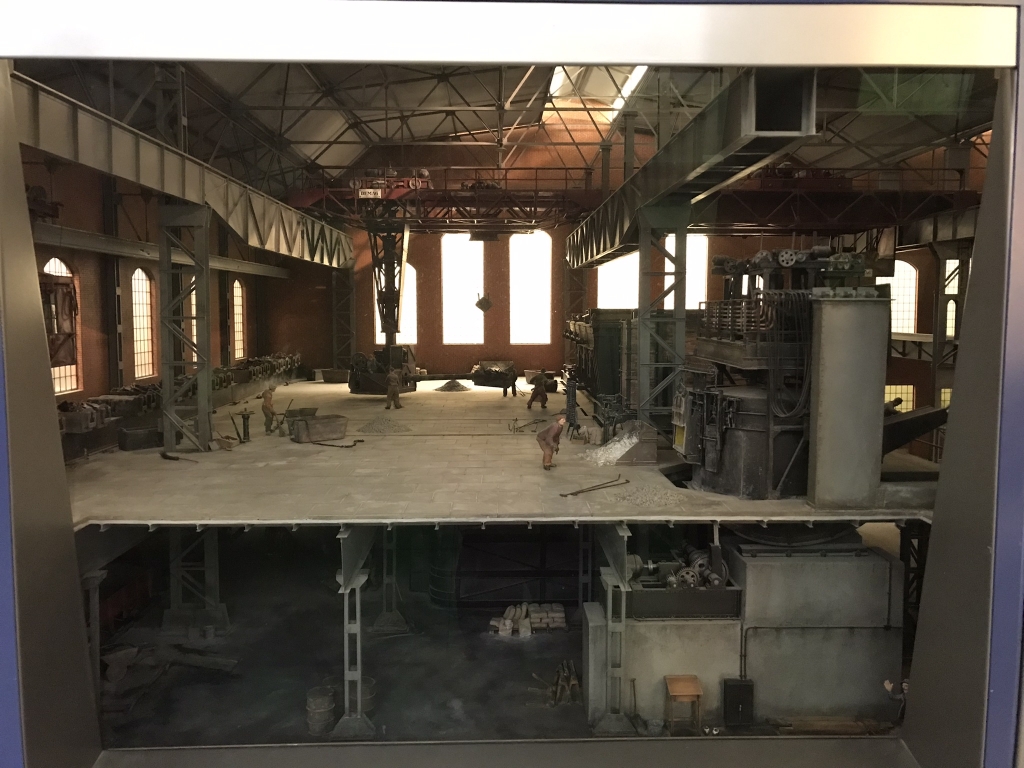
This is a furnace hall in which pig iron is melted down and refined into steel.
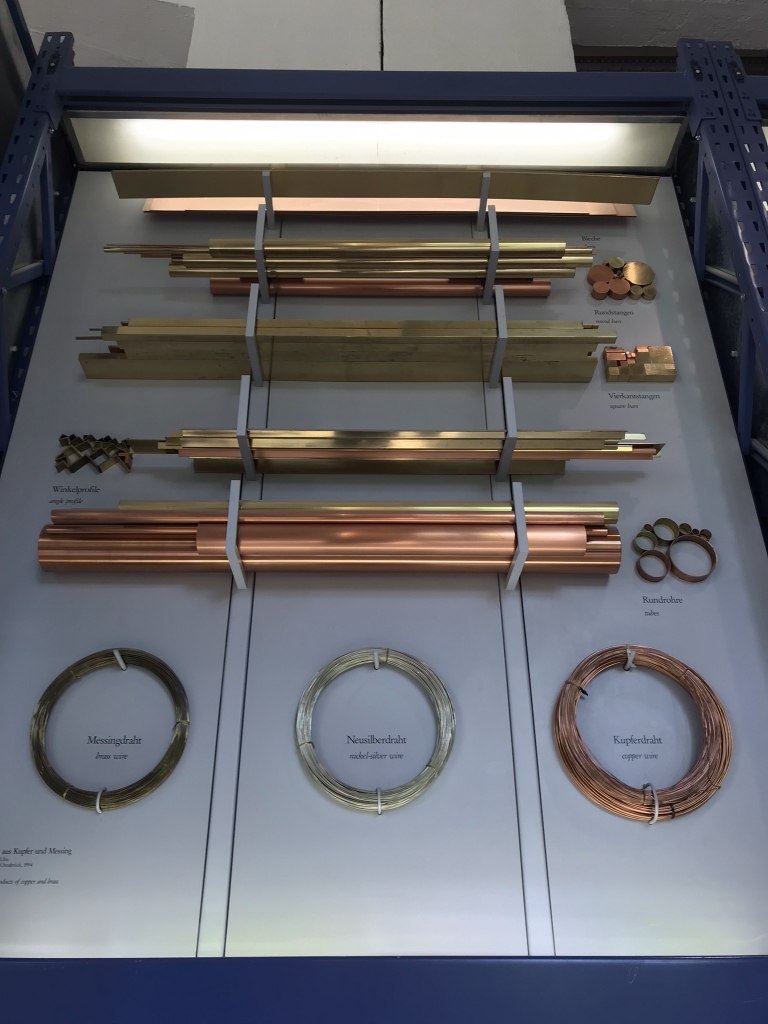
Mostly copper products, along with three coils of wire: brass, nickel-silver, and copper.
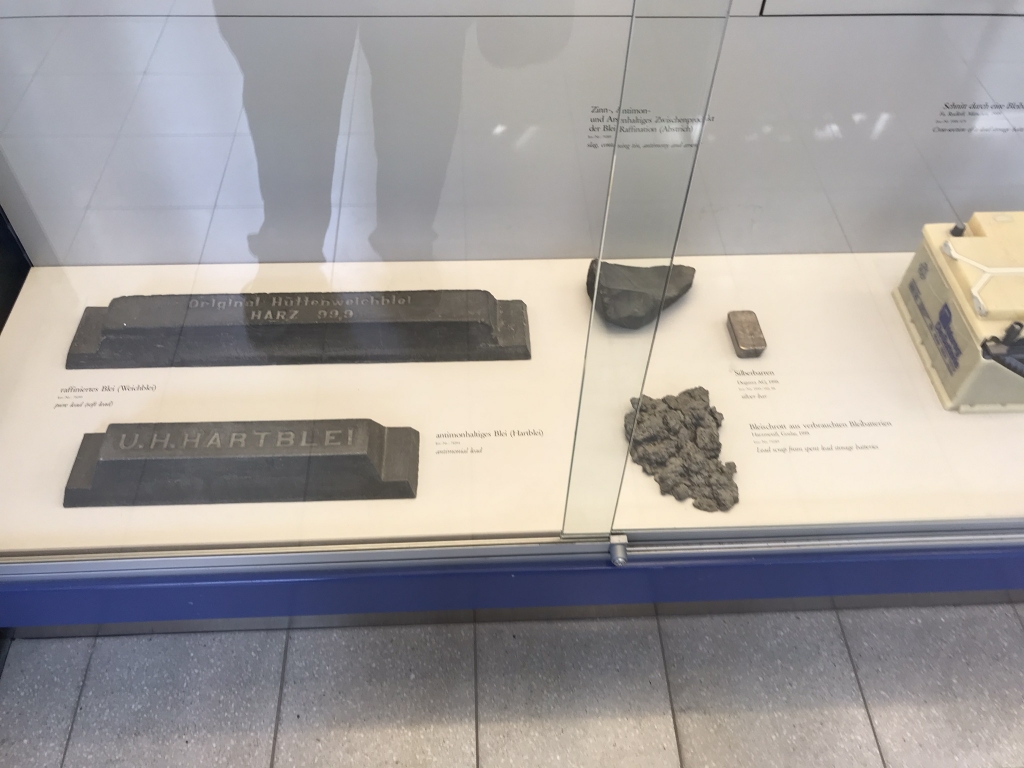
This would be another metal that built civilization, but also one that's deadly: lead.
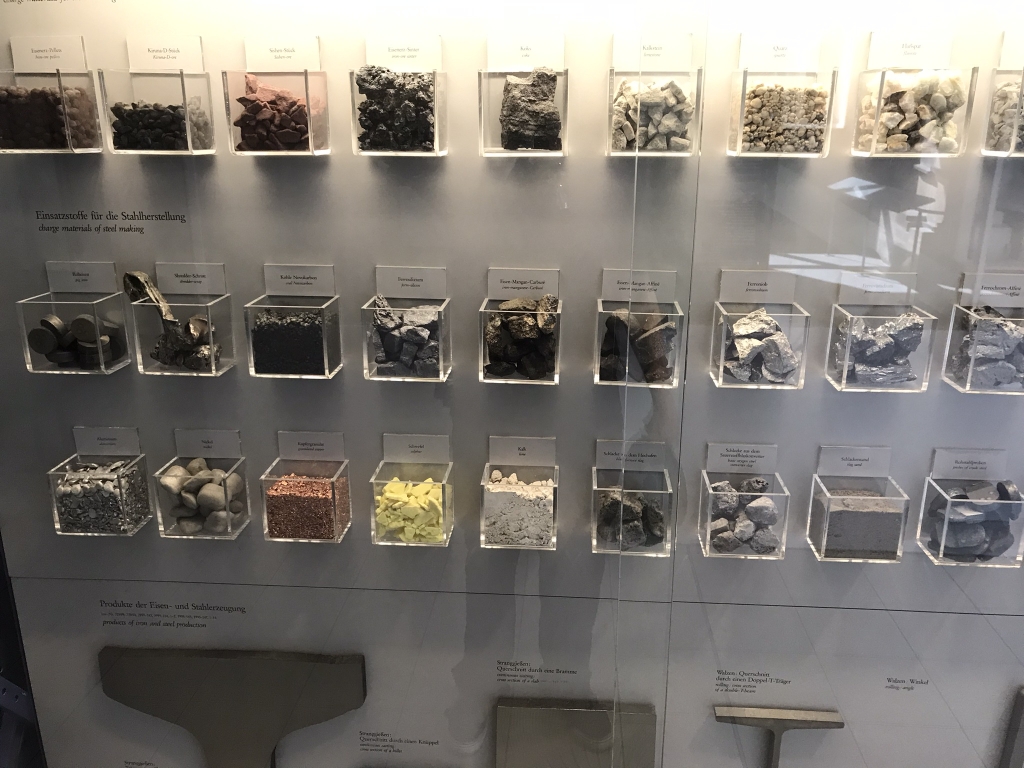
These are all "charge materials" used in steel making, including aluminum, nickel, copper, sulphur, and lime.
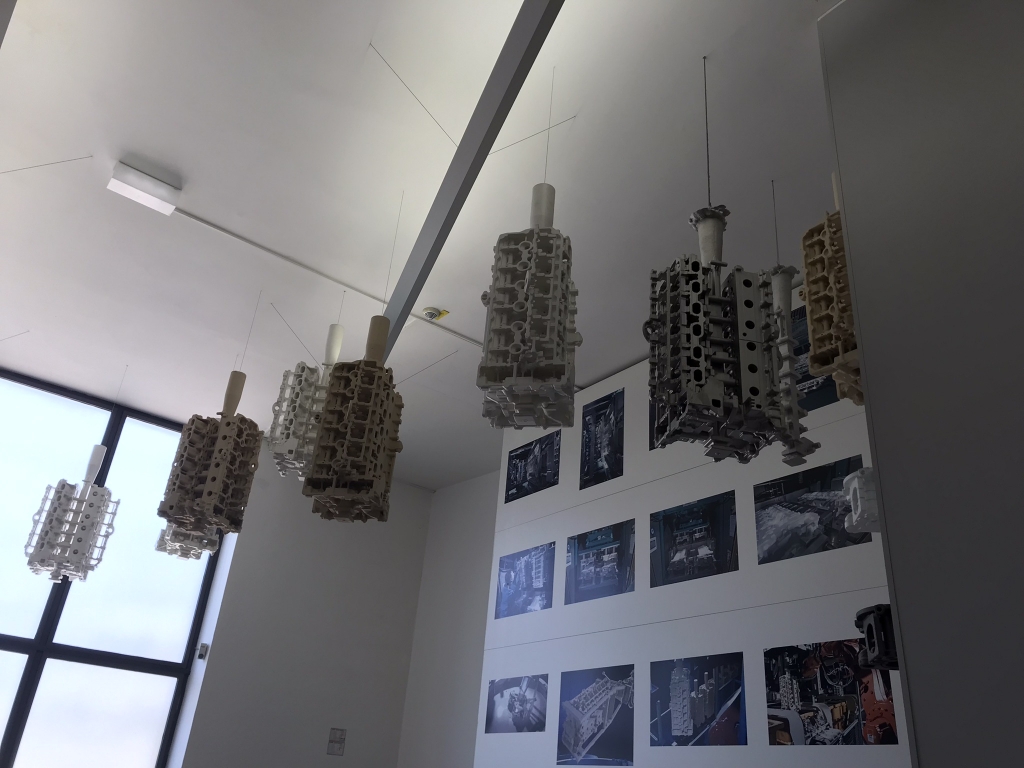
A bunch of automotive engine blocks.
Moving on from Metals to the Electric Power exhibit...
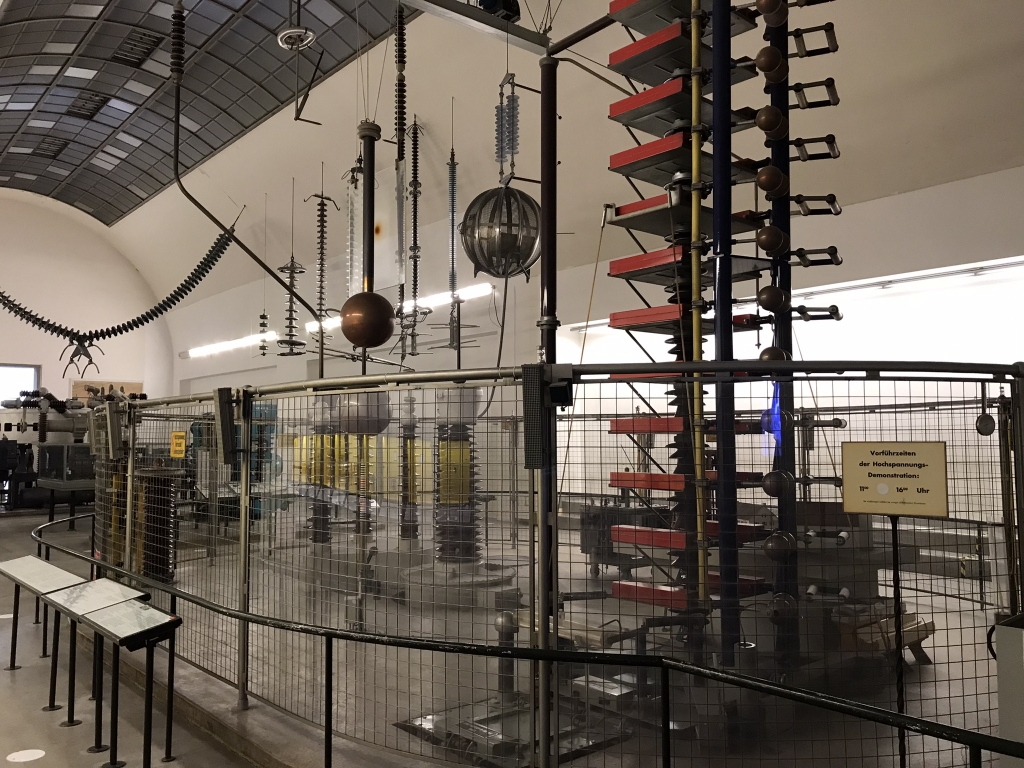
This enormous machine looks like something you'd see at a huge fair sometime around the year 1900. They do demonstrations with this machine at 11am and 4pm, so we'll be back at 11am.
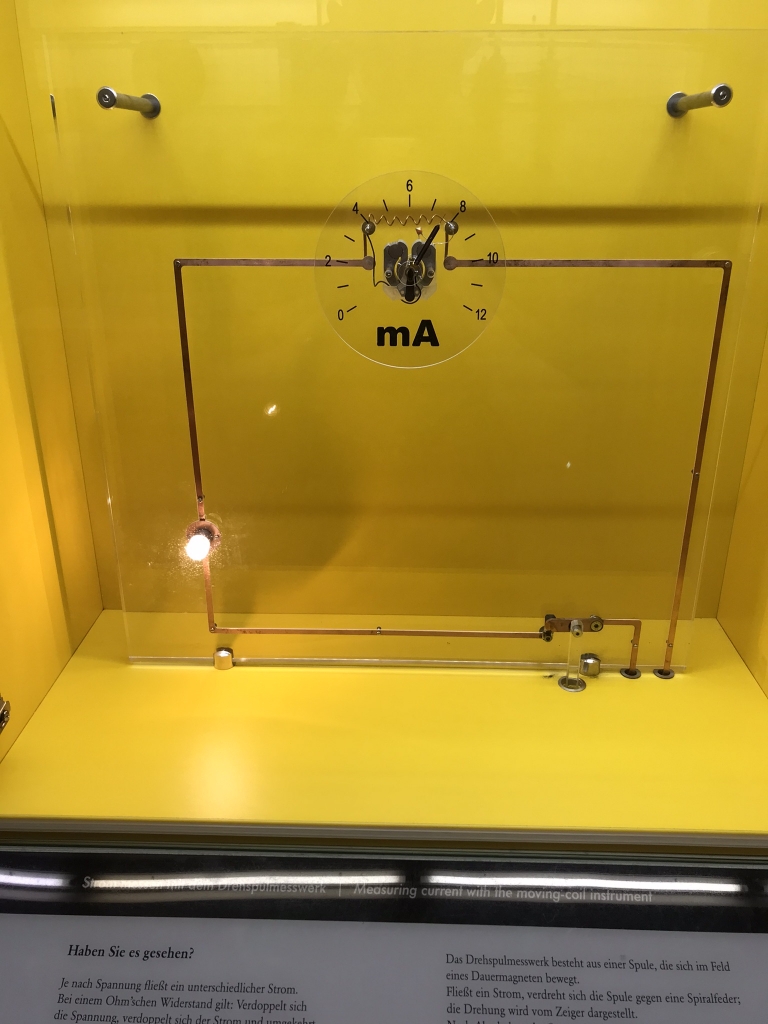
Along one wall in the room with the big machine, there is a whole row of hands-on exhibits like this, where you can connect circuits and learn how electric current works.
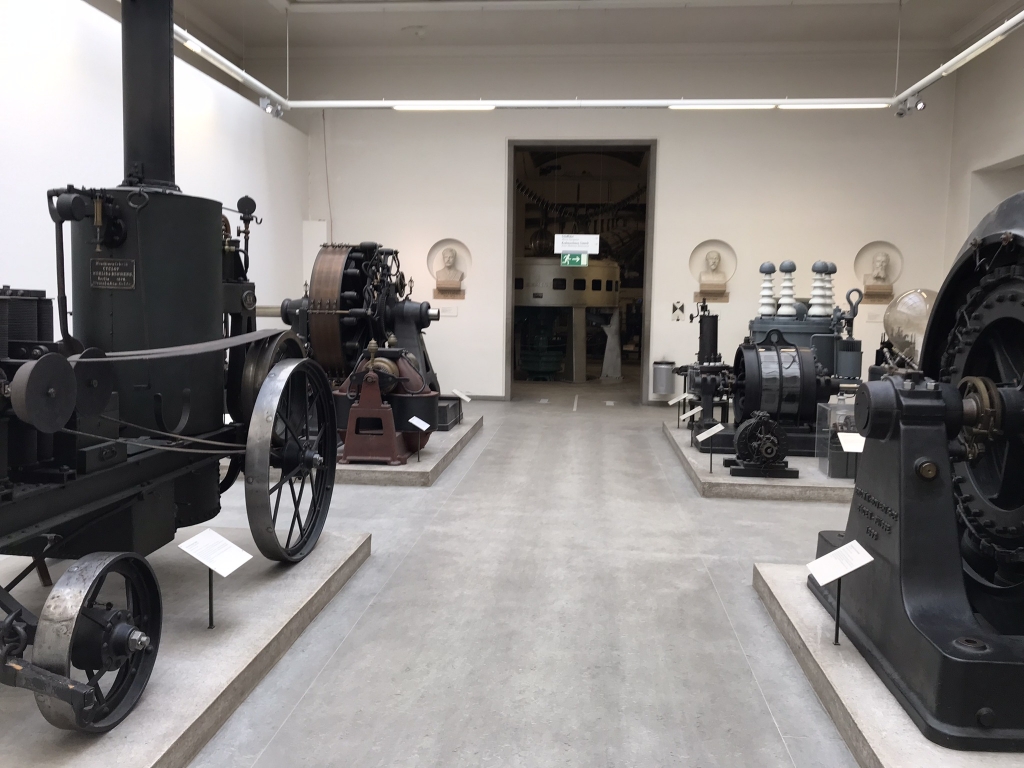
Next to Electric Power is Power Machinery, where you can find examples of power-generating machines like these.
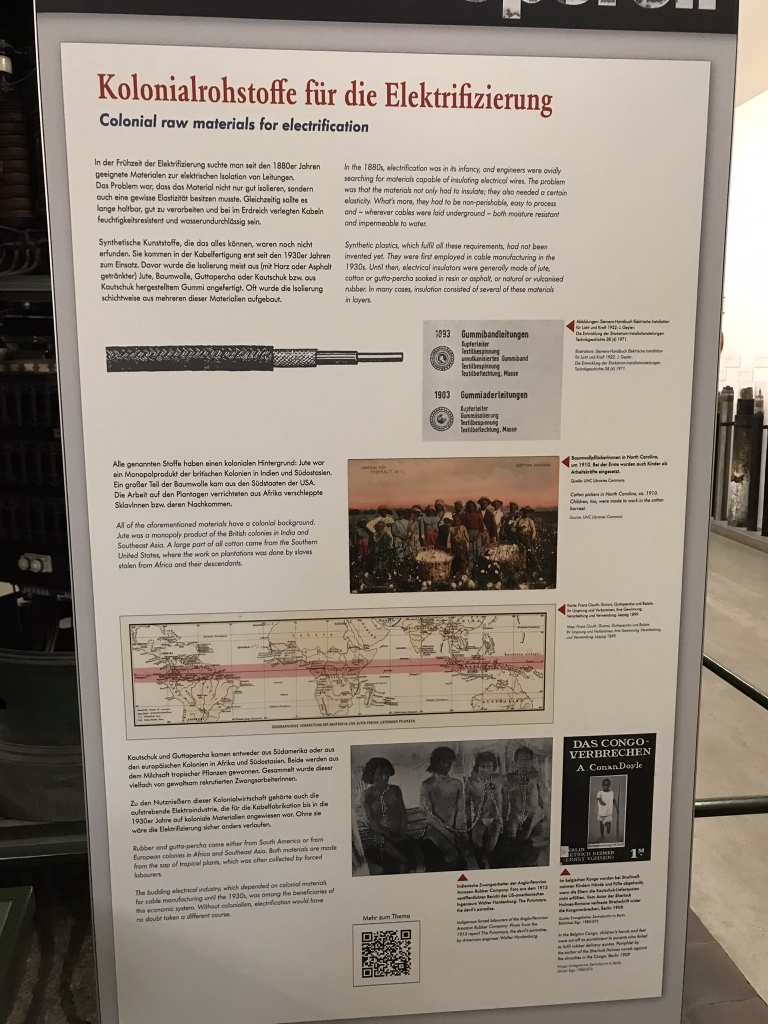
Throughout the museum you can find "Koloniale Spuren" signs like this, which all have history lessons on how so much scientific progress in the late 1800s-early 1900s relied on the exploitation of the people in European colonies in Africa, Asia, and South America. Here we learn about the raw materials needed to make electrical cables, such as jute, rubber, cotton, and gutta-percha, and how at that time they were obtained through forced labor in places like Peru and Belgian Congo. This only ended in the 1930s with the advent of synthetic plastics.
Marine Navigation takes up some space both on Level 0 but also on Level -1, the basement. There's quite a lot to see here, including model ships and much more.
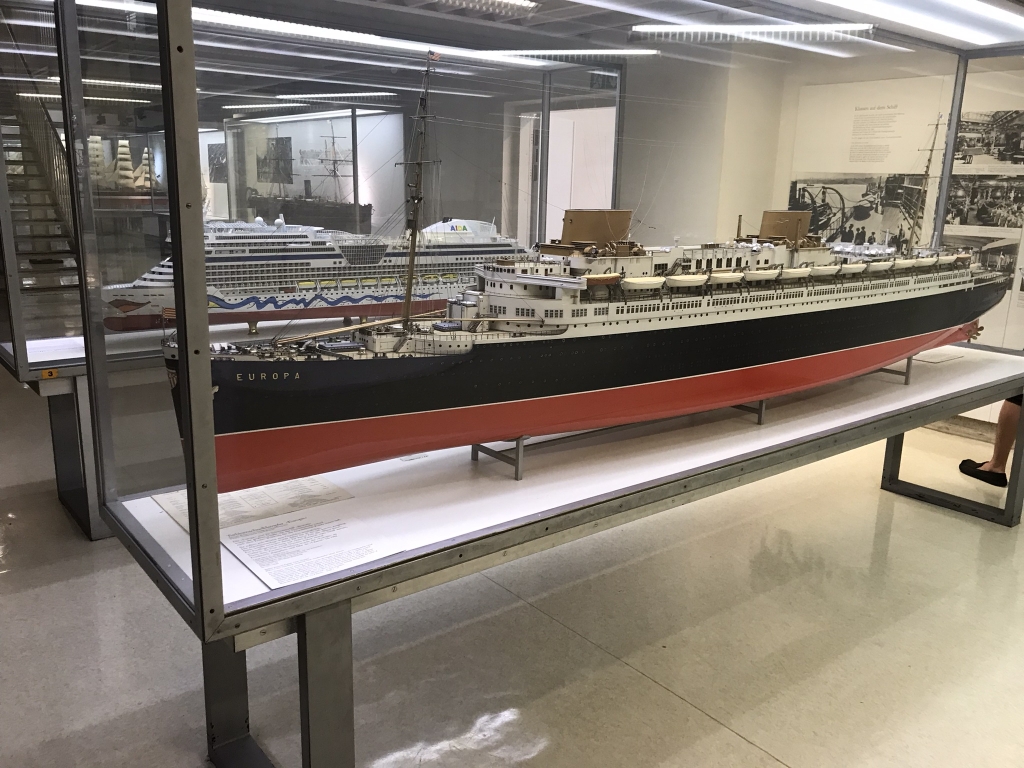
A turn-of-the-last-century oceanliner, Europa, and a modern Aida cruise ship behind it.
Alright, now it's almost 11, so let's go back to Electric Power on Level 1 and watch the big machine...
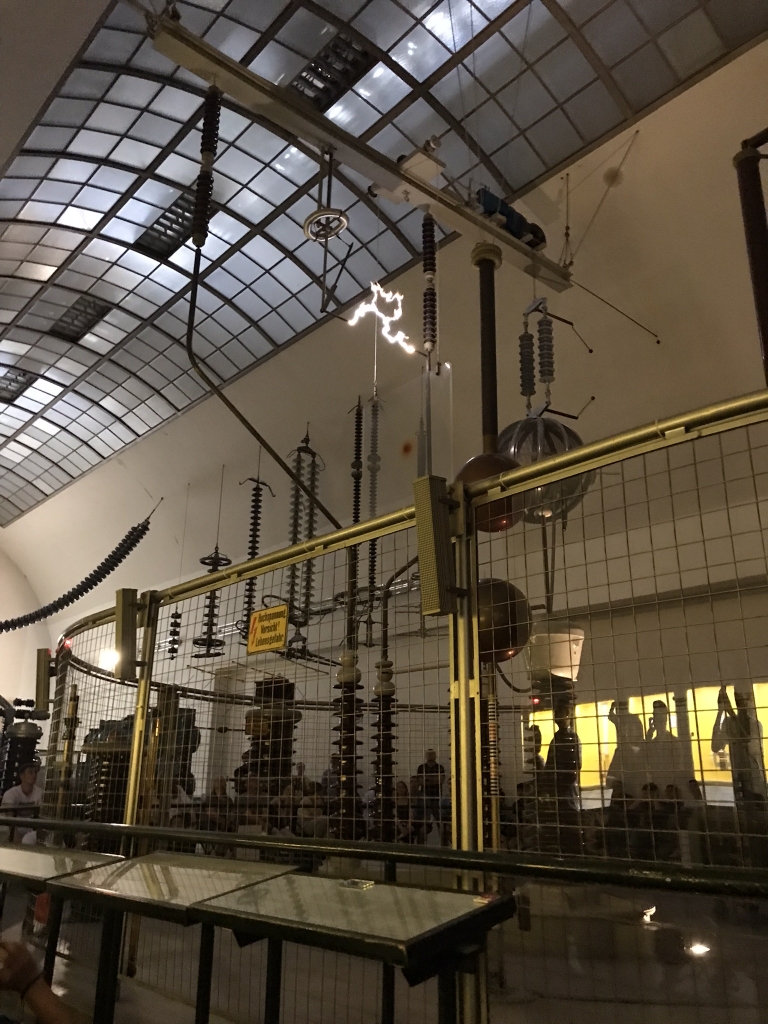
The buzzes and pops this thing made were really LOUD. They even forewarned everyone to plug our ears. Because I had my fingers in my ears for most of this demonstration, there weren't many chances to get a photo.
Now back to all the model ships...
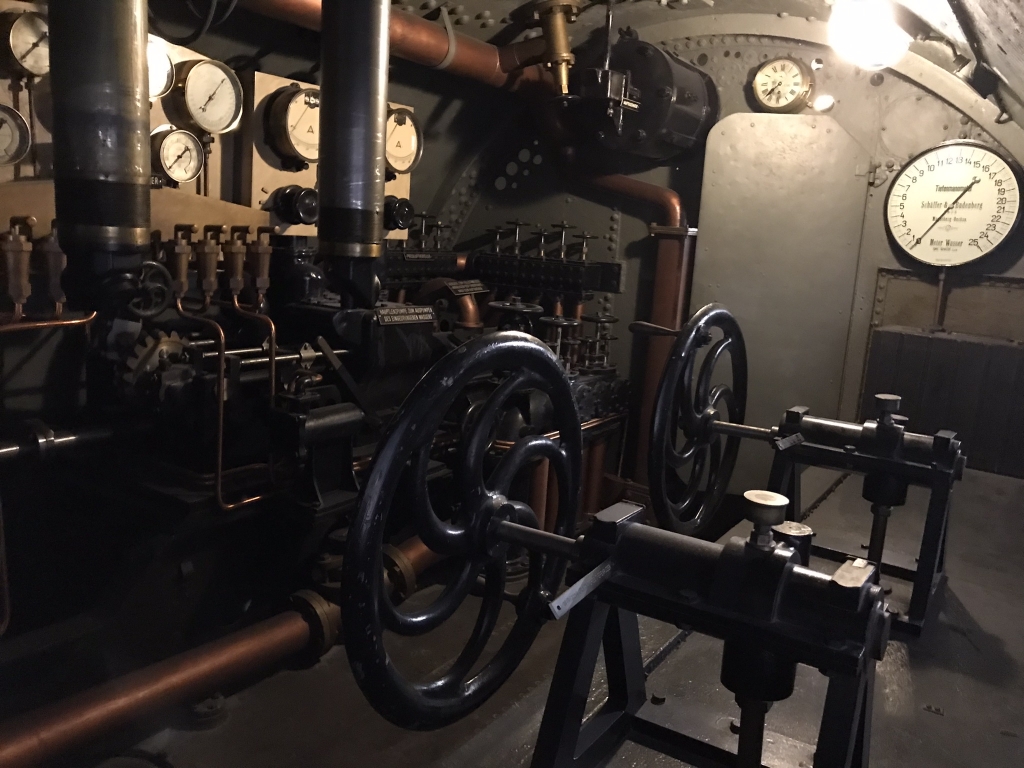
This cramped, narrow space is the inside of a WWII-era U-boat.
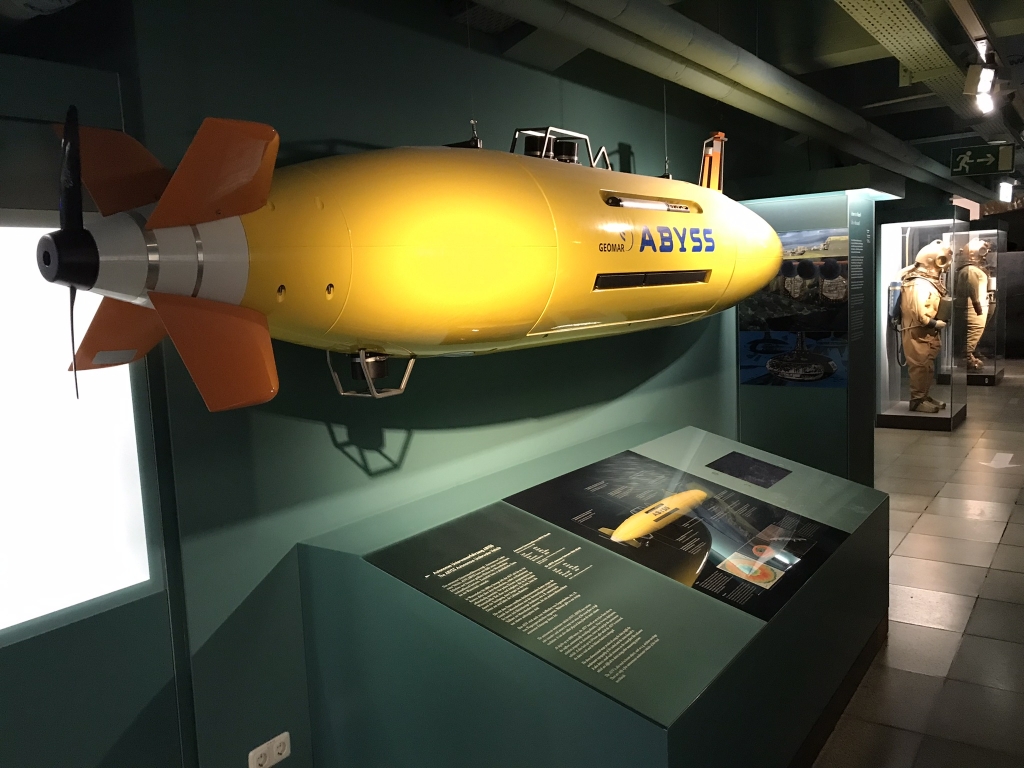
The Autonomous Underwater Vehicle ABYSS.
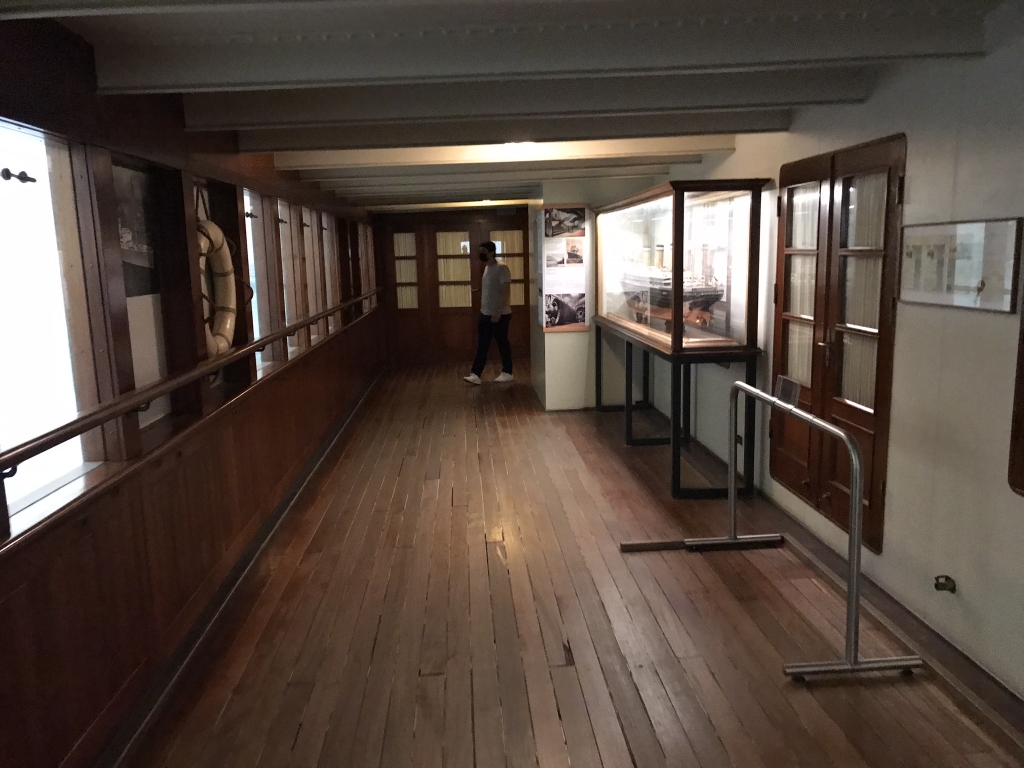
Referring back to that museum in Hamburg...back then I saw a model of a German cruise liner, the Imperator, which had once been the biggest ship in the world when she was built in 1913. This here is a reconstruction of a small part of that ship.
In this area there were some old photos from aboard this era's cruise ships, and some interesting information about them. There a was much more rigid social stratification than what I've experienced on modern cruise liners, with different amenities like dining rooms and swimming pools reserved for passengers in different classes. One German cruise liner, Vaterland, had accommodations for 752 first-class passengers, 535 second-class, and 850 third-class, with an additional 1,772 in steerage or "between-decks."
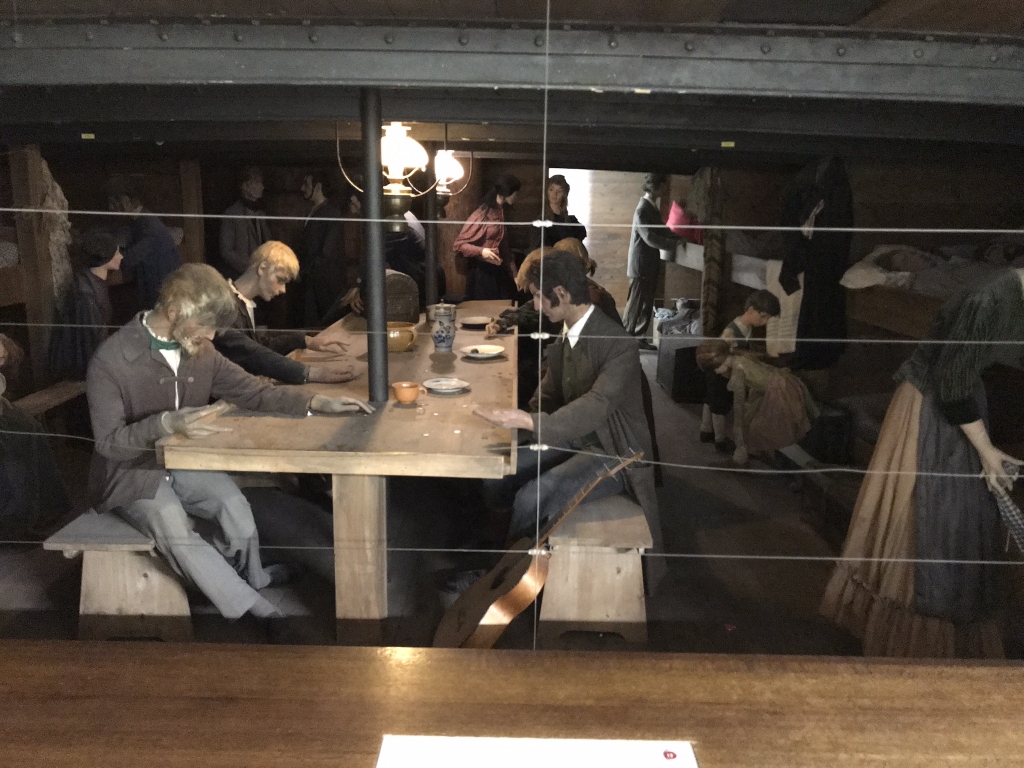
One last thing to look at in Marine Navigation before we move on. This is a replica of a mid-1800s emigrant sailing ship. The people here are in the low-ceilinged "between-decks" area. About 14 million Europeans undertook this dangerous transatlantic voyage between 1850 and 1914, fleeing poverty, unemployment, and religious and political persecution for a better life in America. The accompanying sign, which I also have a picture of, says "Lack of care and atrocious hygienic conditions led to epidemics on board. In 1853 every tenth emigrant died on board. Passengers had to provide their own food, crockery, mattresses and bedding. They formed cooking groups and elected a member who distributed the food rations which were then prepared and cooked by the women."
Moving upstairs, now we're on Level 1. The one exhibit I took a look at here, other than Historic Aviation which I glimpsed from the floor below, was Energy Technology. On display in this hall are all kinds of real examples and scale models of means of energy production, such as:
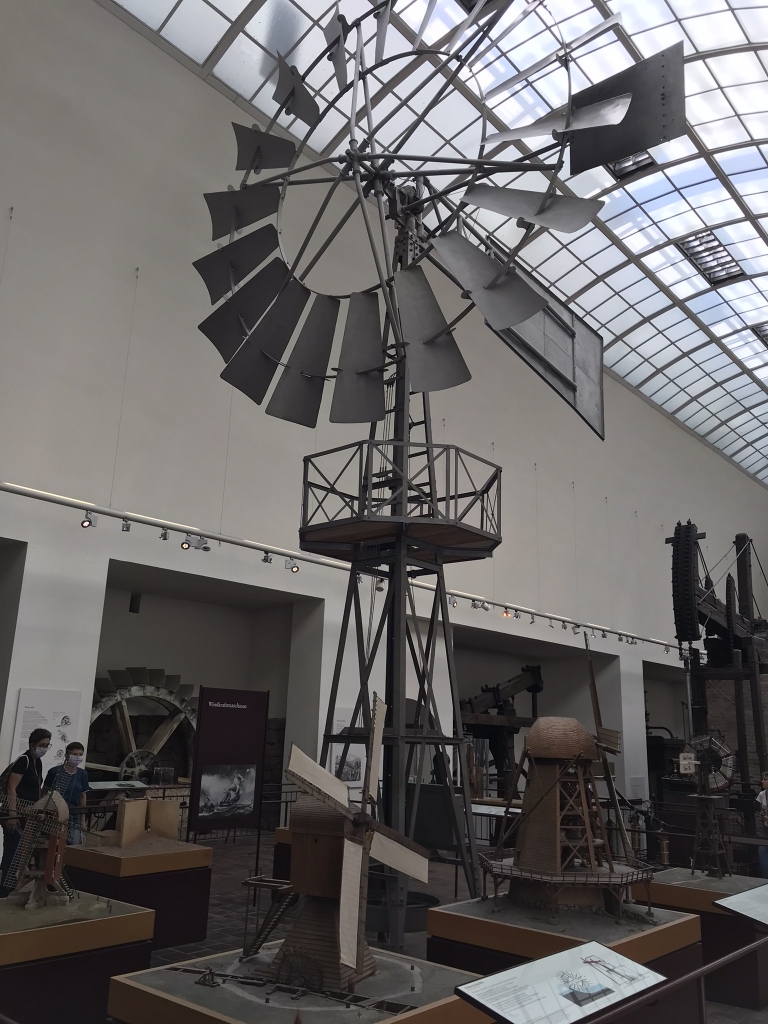
Windmills
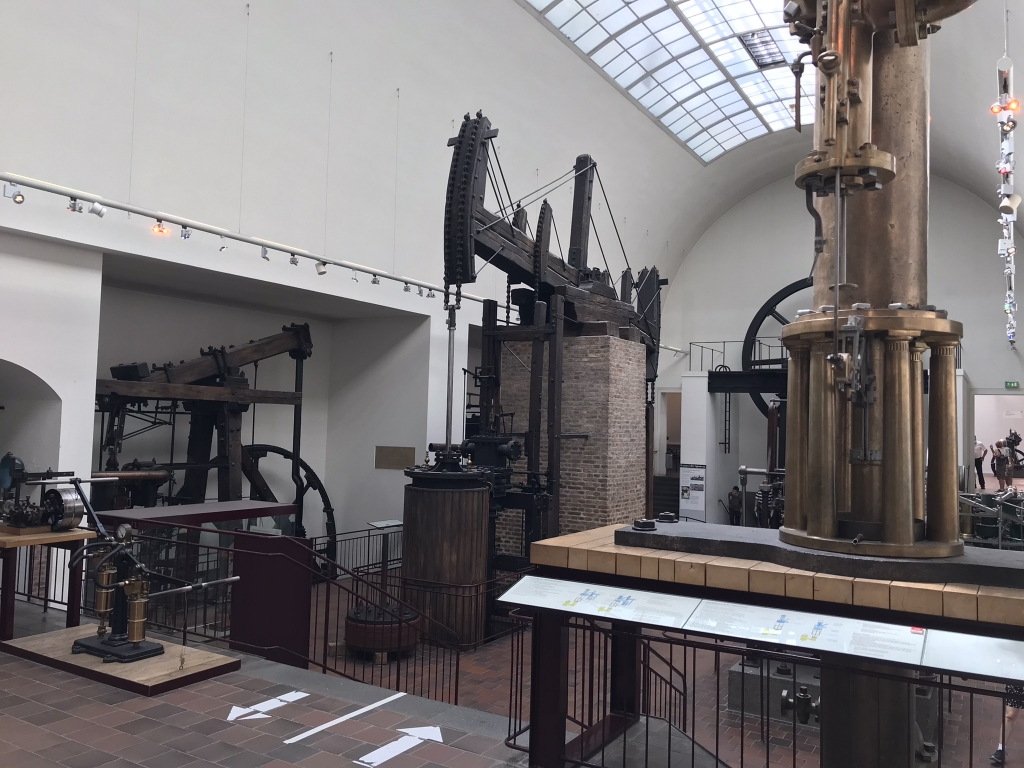
Oil wells, like the ones I often see whenever I drive through west Texas.
The building gets progressively smaller as you move upward, with each level being somewhat smaller than the one before. While Level 3 and below are wide and contain several large halls, 4-6 are only inside the building's central tower and don't have much in them.
Level 4 was interesting. Not only was it the middle of the three-level Astronomy exhibit, it also had an entire Amateur Radio room. Unlike everything else we've seen, this is a topic I'm personally involved in.
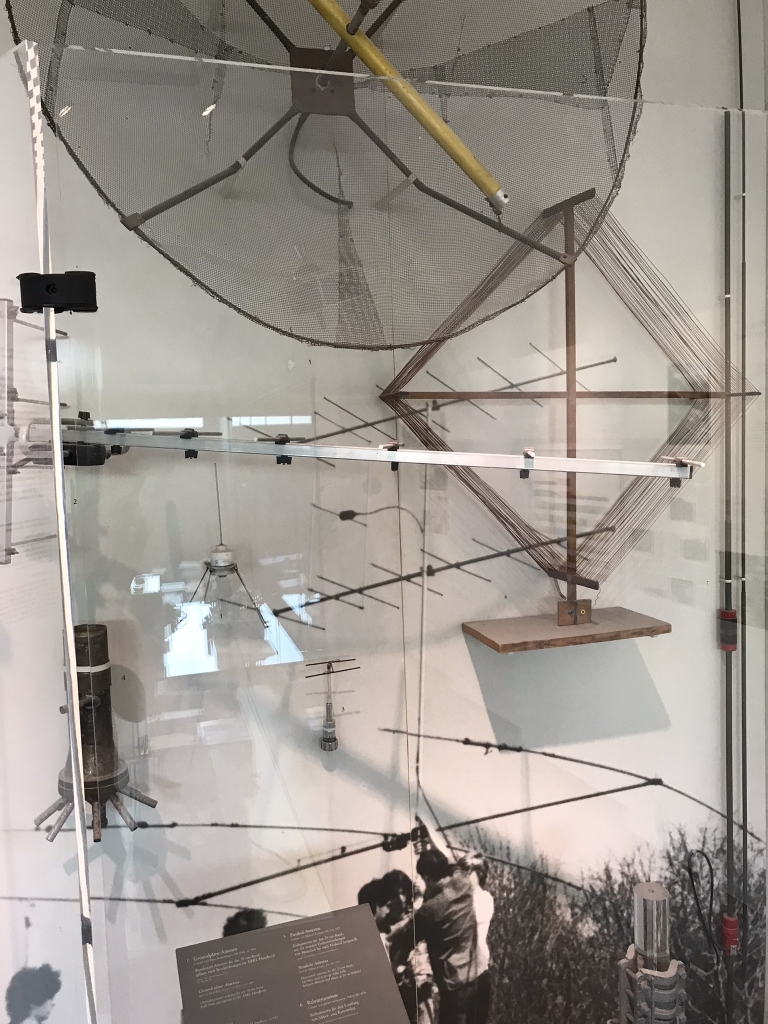
Here's some antennas of varying types, such as the parabolic antenna (that big dish on top) and a loop antenna (the diamond to the right).
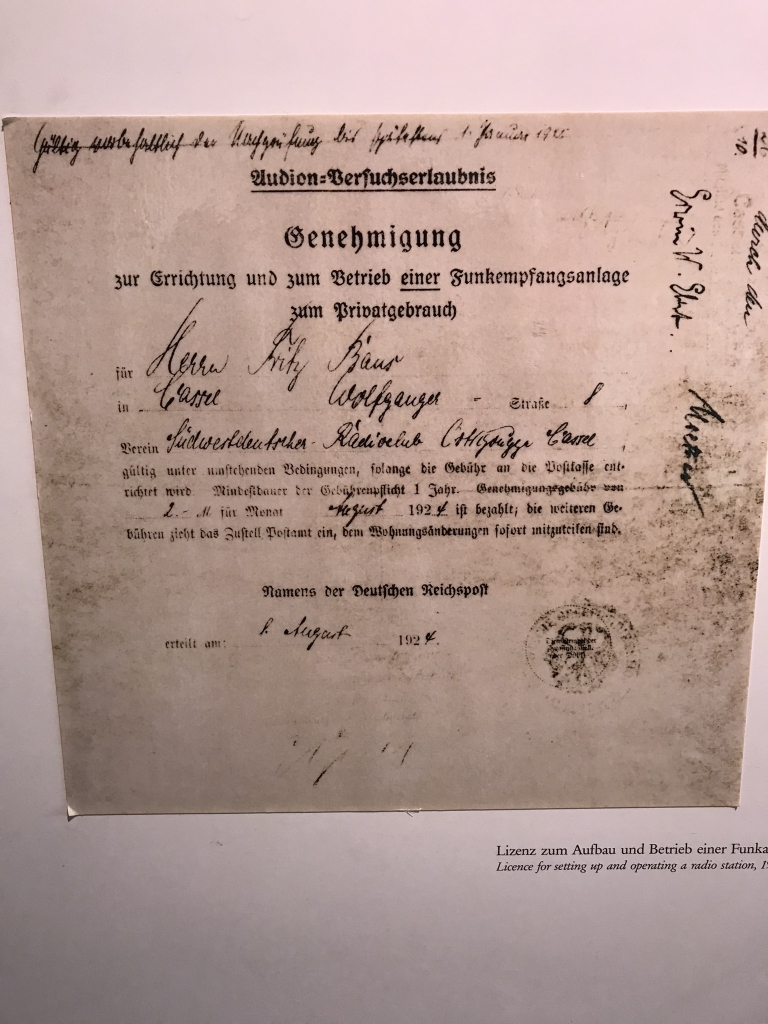
Here's an old German radio license from 1924.
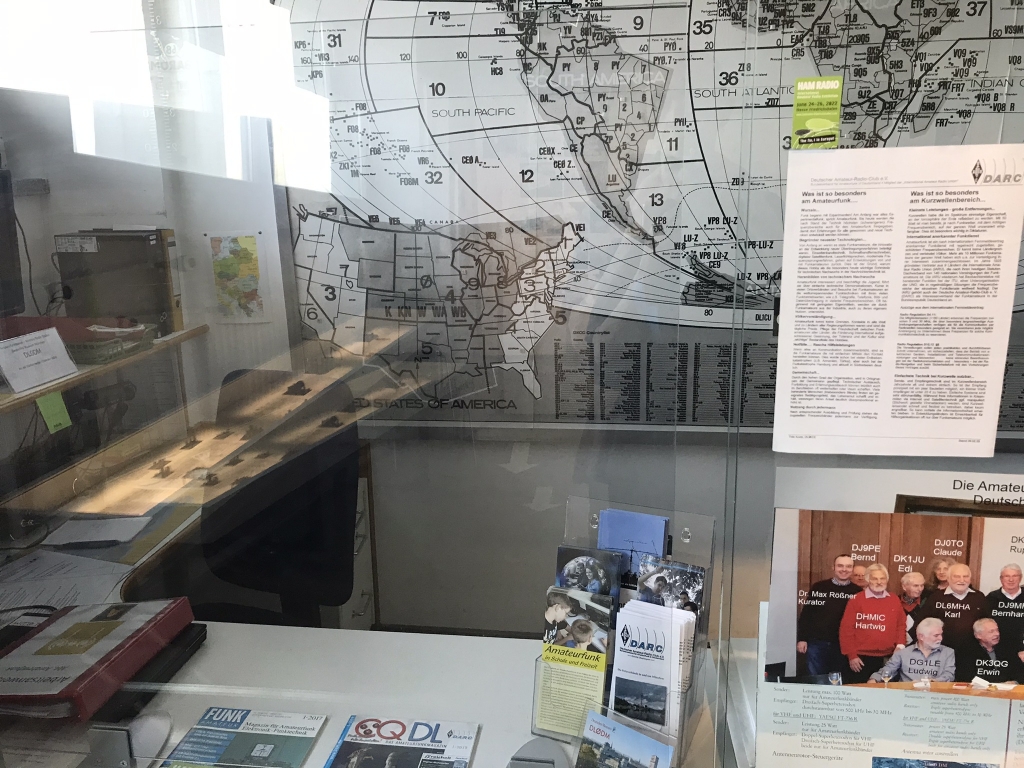
Behind the glass, an example of an amateur radio station, what many of us would call a ham shack, and some pamphlets from DARC, the German national amateur radio organization.
Now let's step away from the ham shack and look at some telescopes. The Astronomy exhibit takes up space on Levels 3, 4, and 5.
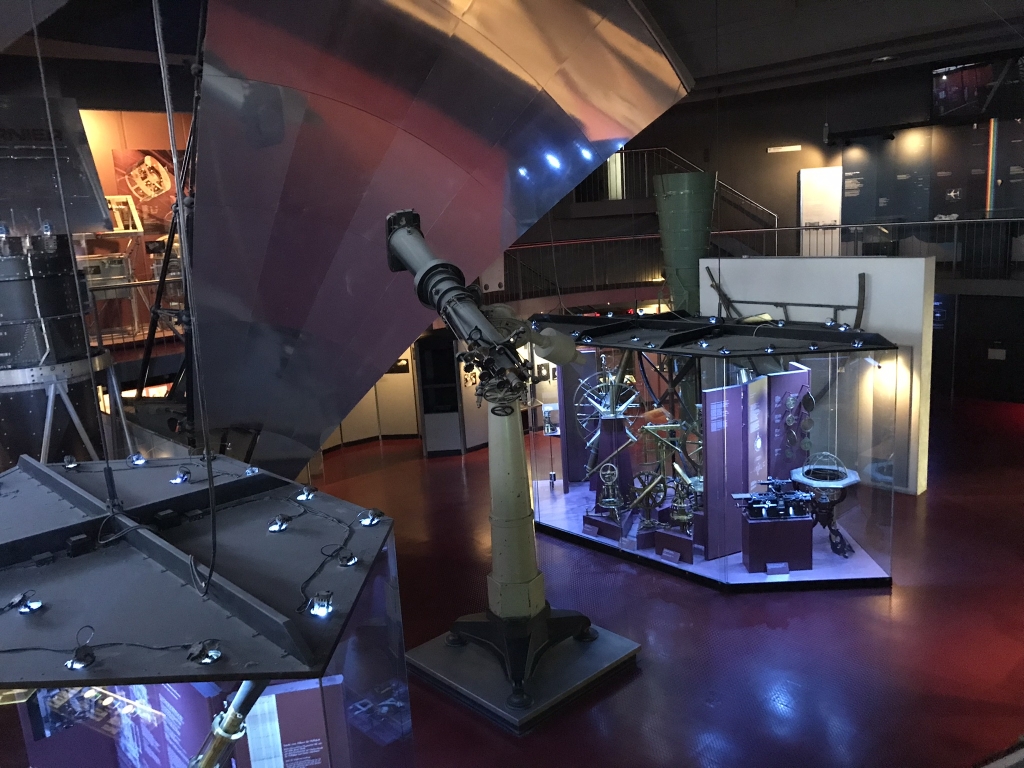
Telescopes come in so many shapes and sizes, and pick up so many different wavelengths. Not just visible light, but radio waves, infrared, ultraviolet, X-rays, gamma rays...it's all the same stuff and our eyes can only see a little bit of it.
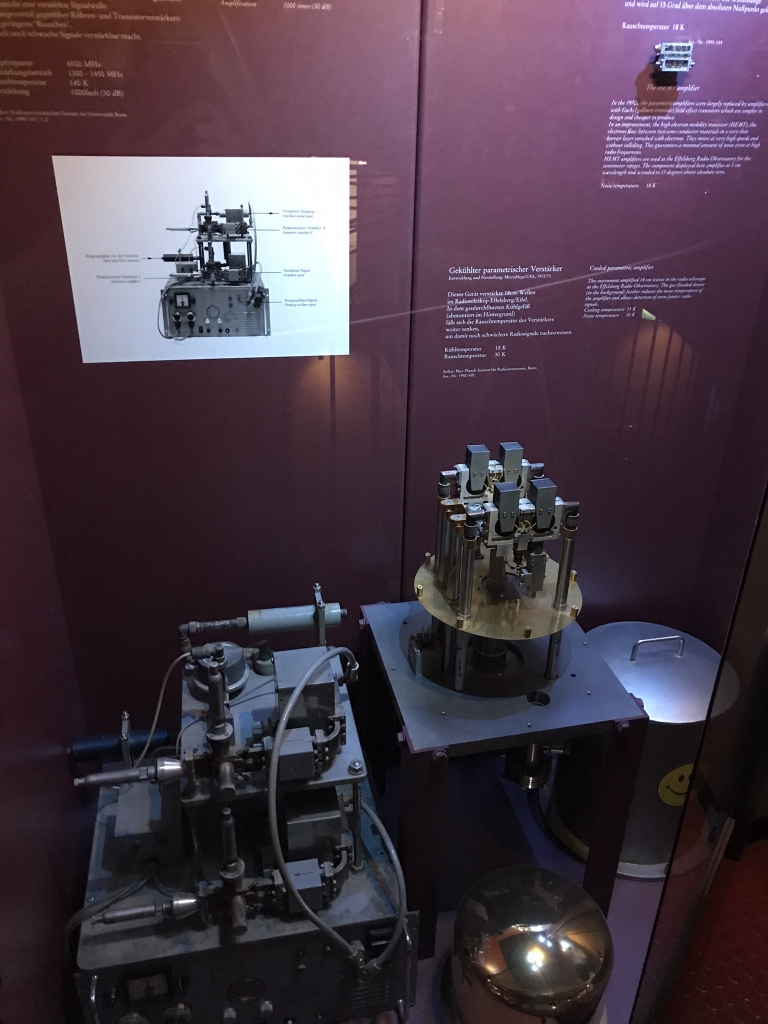
Can't tell what this is? It's an amplifier for a radio telescope. Specifically, this one used to be used with the Effelsberg Radio Observatory.
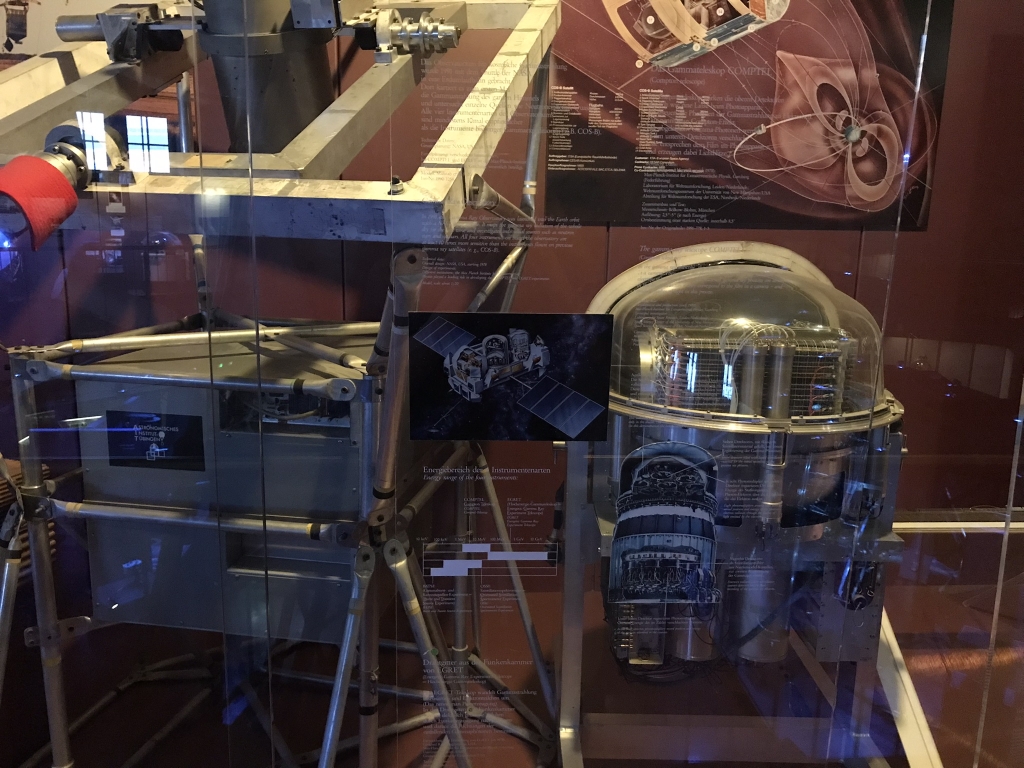
In this case you can see reconstructions of satellites that were gamma ray telescopes, such as COMPTEL, part of the Compton Gamma Ray Observatory, on the bottom right.
The top floor, Level 6, is really on the roof of the tower, and it's called the Sundial Garden. Here's more stuff I could stare at all day, because it's so much more fascinating than you could ever guess. These sundials can reveal so much more information than just what hour of the day it is at the moment. I also took pictures of the informational signs next to them, and even now I'm still just beginning to figure out how to read these things.
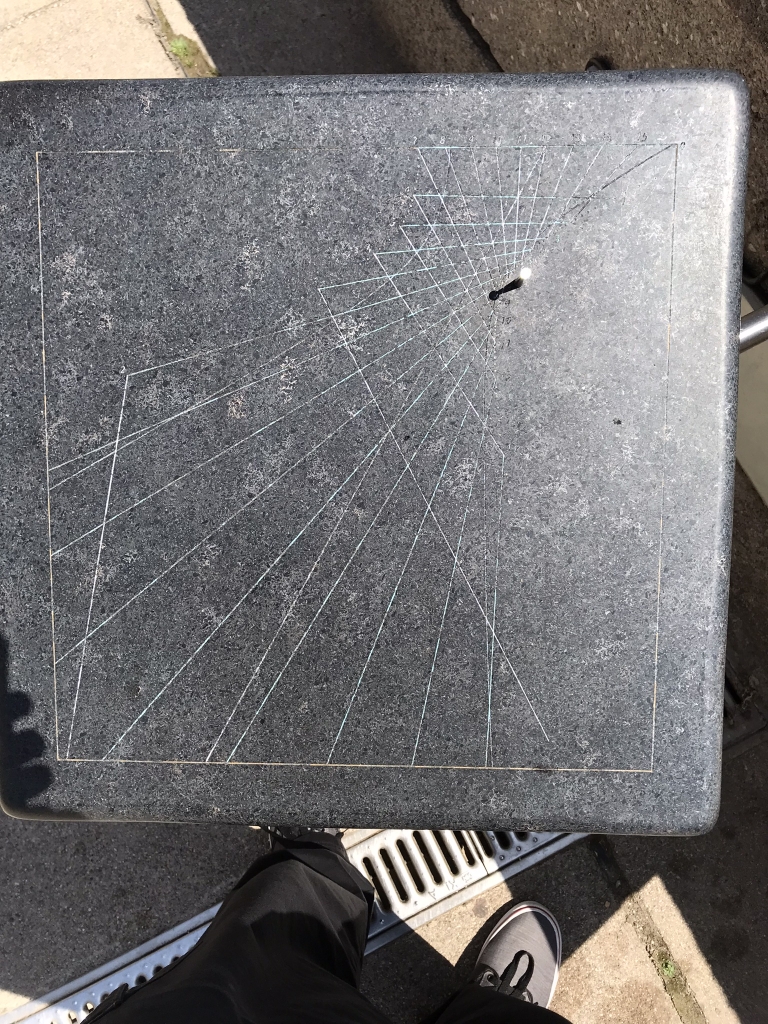
This one measures "Italic and Babylonic hours." It can measure the sun's hour angle, that is, its position in the sky.
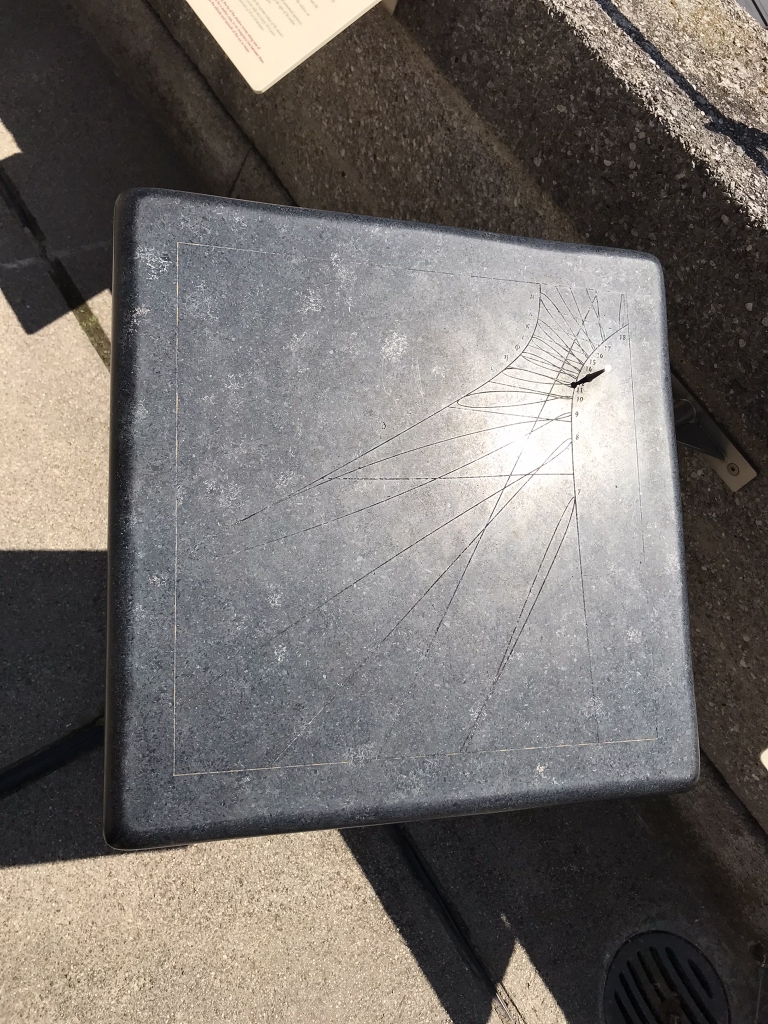
Here's one that measures Universal Time and temporal hours. The informational sign, not in the picture, says that the pattern of curves you see inscribed on the sundial has been known since the early 18th century.
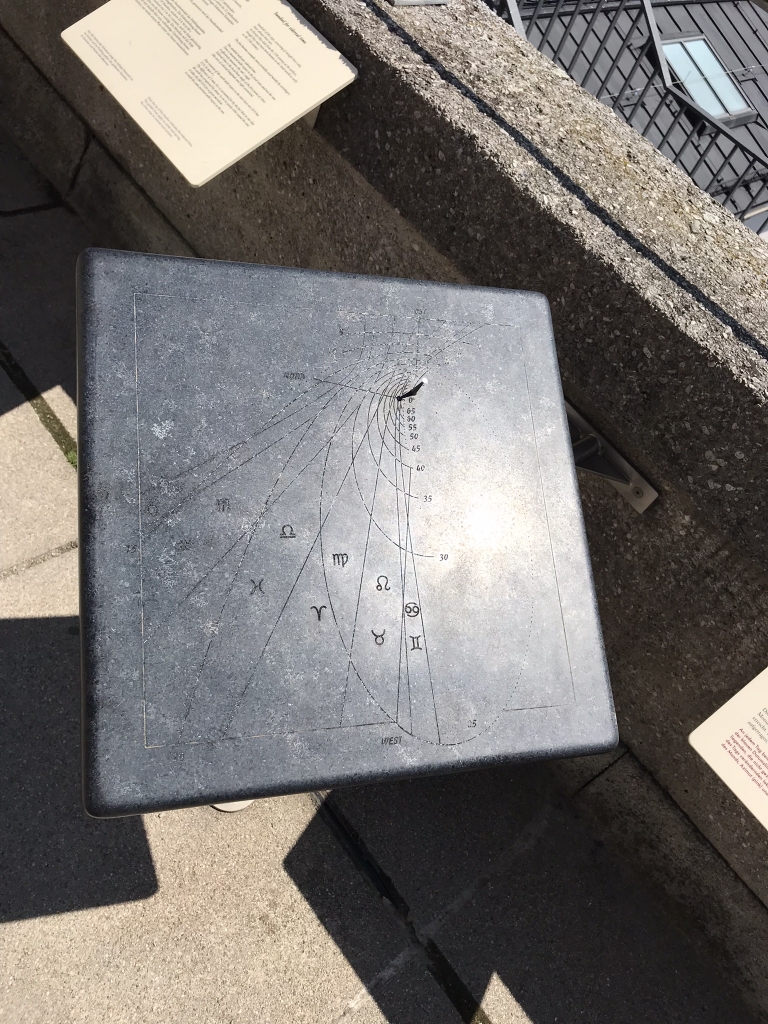
This one looks even harder to read. It will tell you your altitude, azimuth, and zodiac sign.
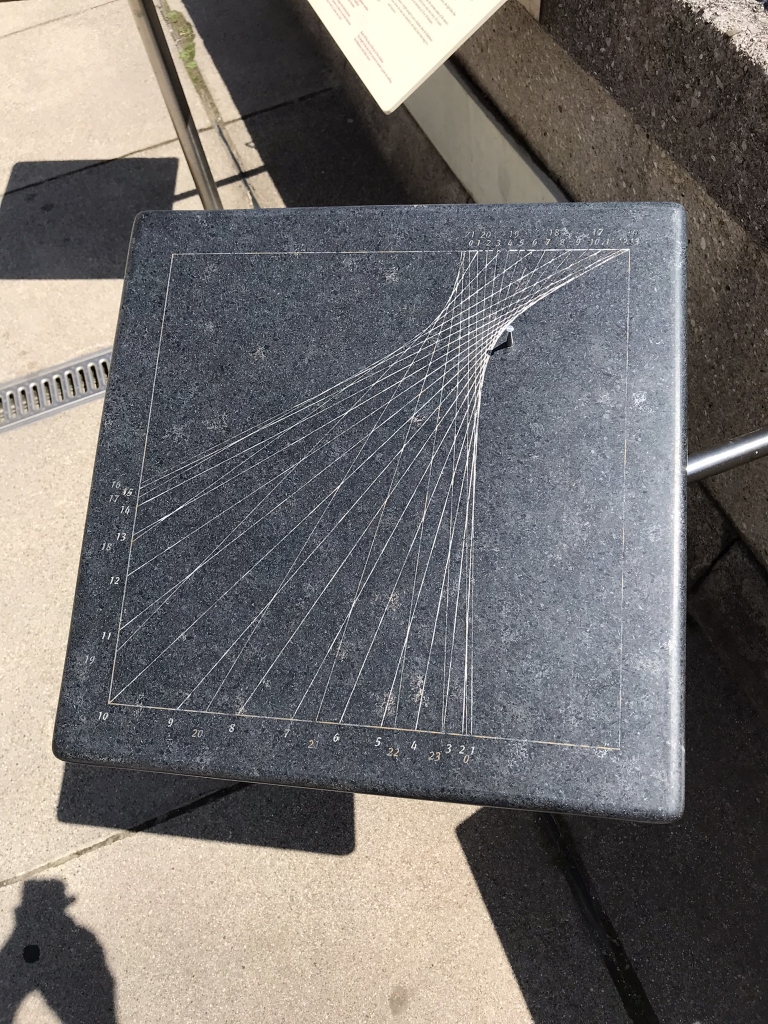
Finally, one that measures sidereal time, that is, time measured with respect to the stars and not the sun.
Continuing the timekeeping theme from the Sundial Garden, the last thing I looked at in the museum was Chronometry, on Level 3.
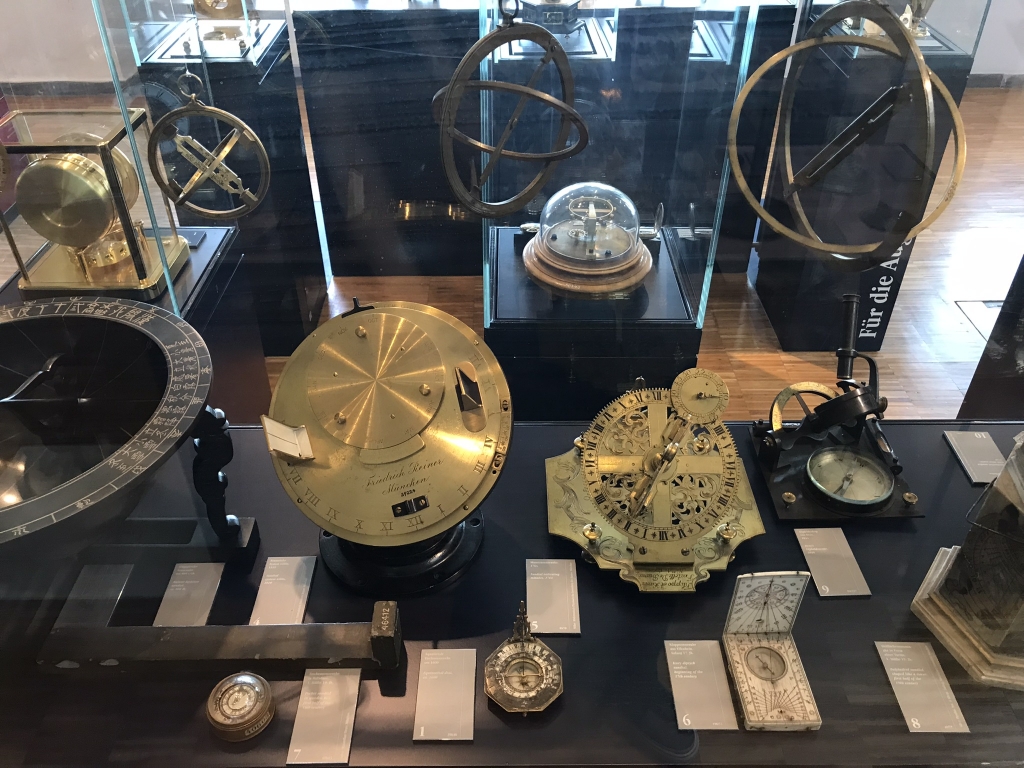
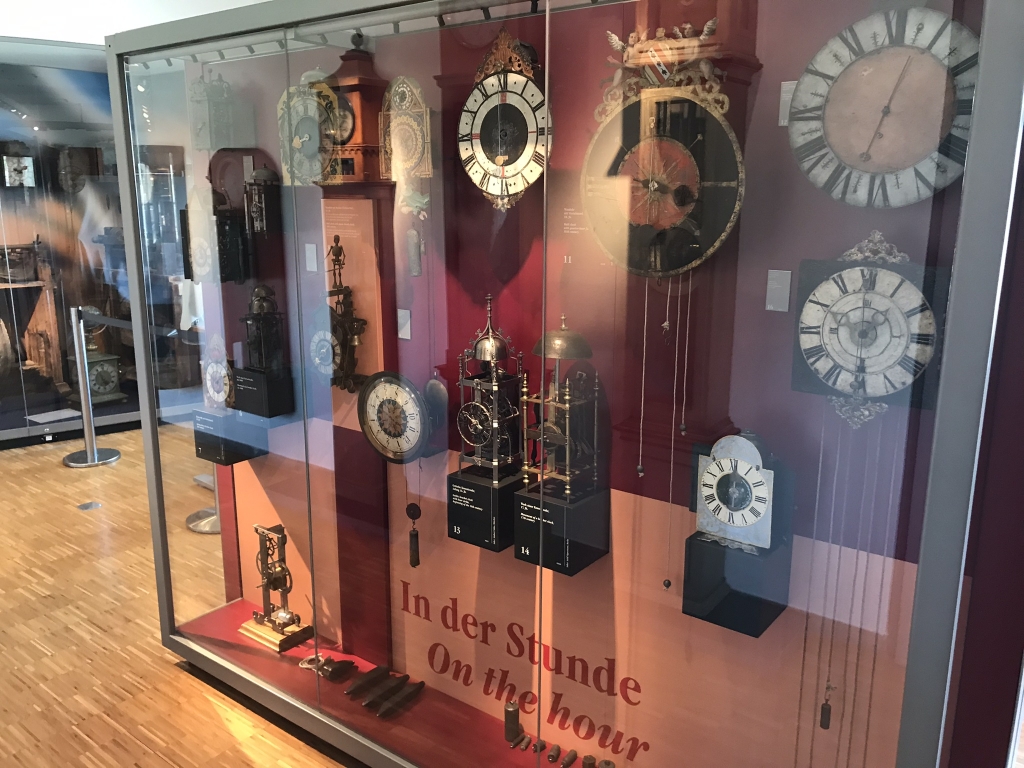
I didn't spend nearly as much time here as I did on the sundial garden, probably because it's more familiar. Still something to see, though, especially the disassembled clocks in which you can see all the intricate gears.
After all the old clocks, I was hungry enough to be done with the museum and leave for the day. That leads to the only problem with the place, the lack of anywhere to eat within. If they had such a place, like the cafeteria in the American Museum of Natural History in New York City, I certainly would have stayed longer and gazed at more of these fascinating exhibits.
These fascinating exhibits that I would have gazed at included Historic Aviation, which featured a big collection of old aircraft, Musical Instruments, Glass Technology, Measures and Weights, two Observatories, and best of all, the Planetarium, which has scheduled space shows, and the Altamira Cave, which is a reconstruction of a cave in Spain that contains ancient cave paintings.
So yes, this was certainly a worthwhile visit. Because of how much I missed this time, I'll absolutely come back to the Deutsches Museum whenever I return to Munich.
Stuttgart/Munich Trip:

